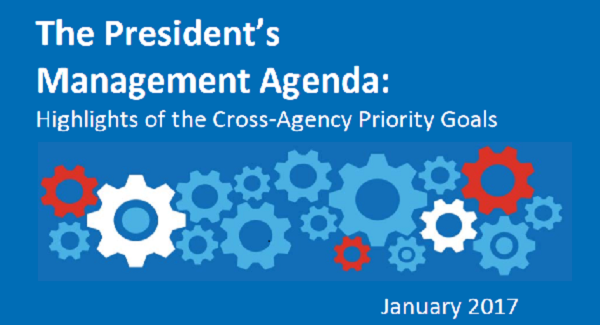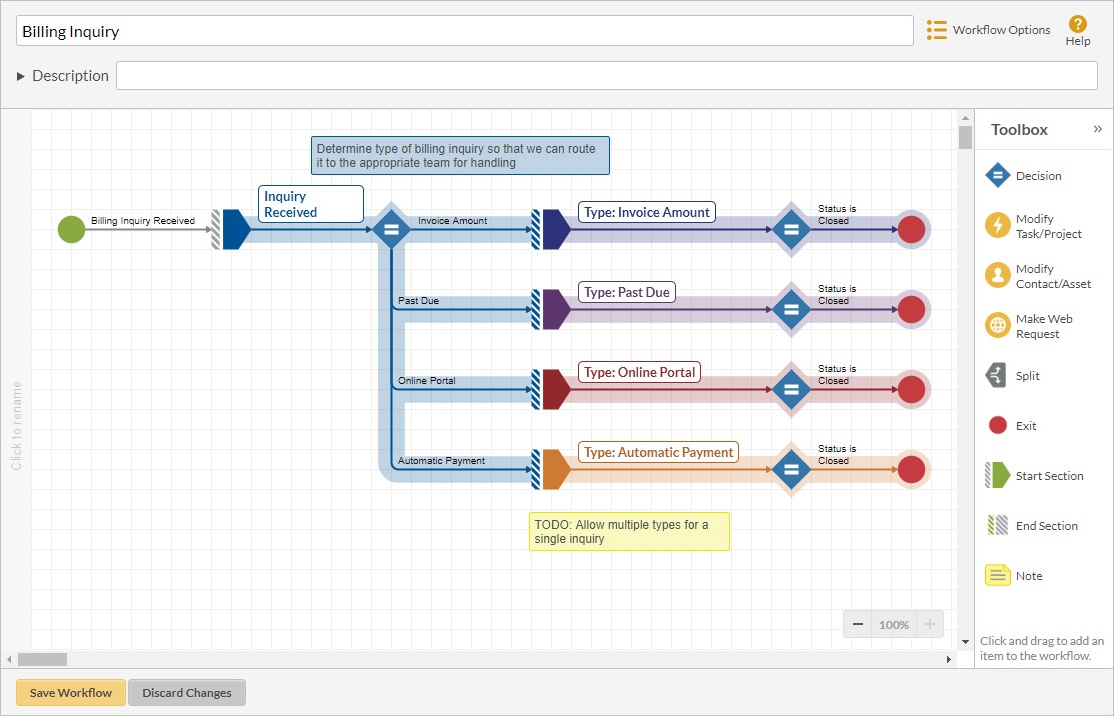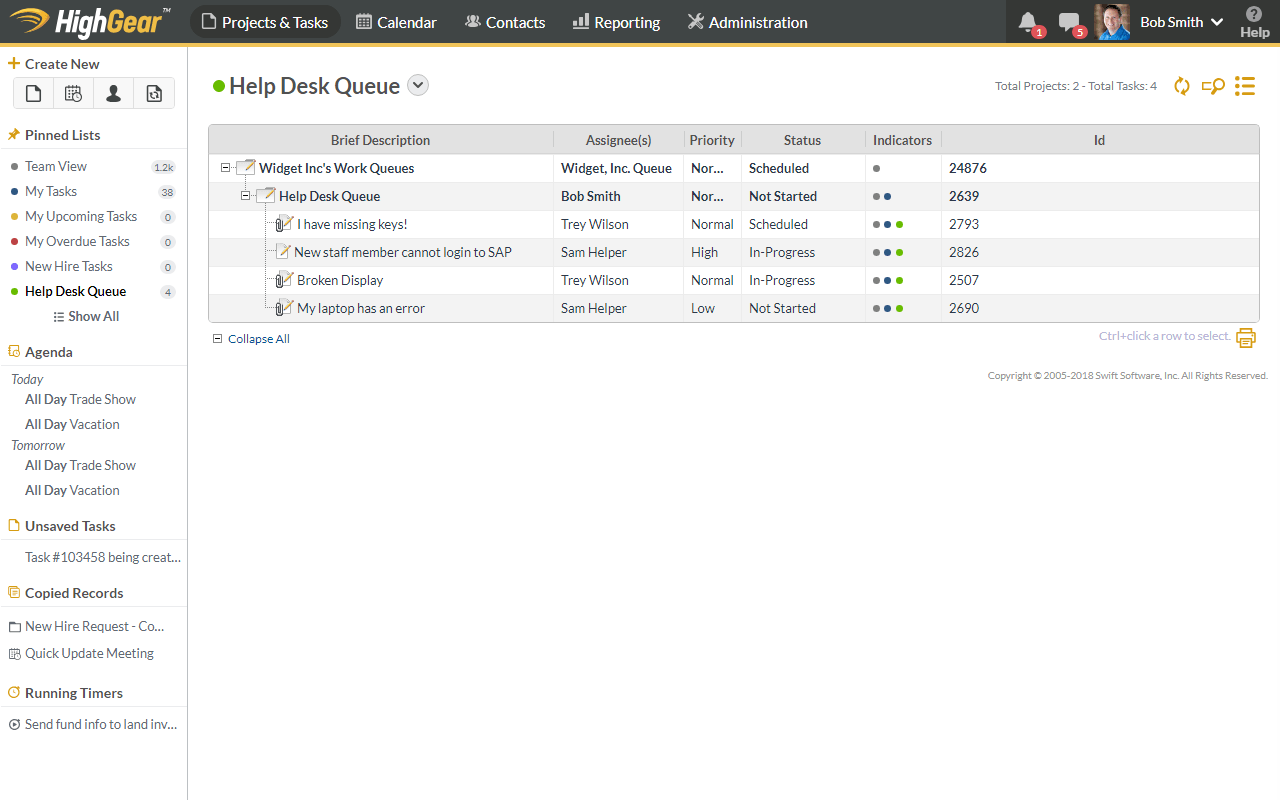
One of the Trump administration directives is that for each new law or regulation, two existing ones must be retired – this is one of the central tenets of Steve Bannon’s philosophy of the deconstruction of government. Coupled with this is a cut in budgets, not least after the announcement of an increase of $54 billion in military spending being covered by a decrease of $54 billion in non-military spending.
We’ve already covered how government departments are going to have to do more with less, but there is more at work here than just the Federal government: all government entities at state, county, and down to the smallest municipal operation are going to have to follow suit.
In order to improve the way government delivers services externally, we need to aggressively reform the way government delivers service internally.
[Dave Mader, Controller, Office of Financial Management, Office of Management and Budget, U.S. Government]
Shared services, or Joint Management, provides a means to deliver services to customers irrespective of where they are located. One team serves two or more communities, and why not? As a local county taxpayer, do I care if my local government’s accounting is handled by a team that also provides accounting services to the neighboring county?
As long as the shared service does not (a) cost more money, or (b) decrease the quality of service, then as a taxpayer or consumer of the shared service, I’m perfectly happy and amenable on a personal level.
The issue of joint management seems to create more of a problem for the internal hierarchies of government organizations themselves than it does for the customers/taxpayers.
Teams and departments must be merged, and there is the inevitable pruning of duplicated positions, which even if handled by natural wastage still means someone sees their bureaucratic empire reduced in scope, or even eliminated. Two departments, two chiefs – merged into one, someone loses, and so it goes down the hierarchy.
Beyond the internal politics of creating shared service teams, there are the cultural and operational issues of bringing people together to work as an effective unit, and deliver standardized services to consumers. This is a complex area, requiring superlative management and leadership skills, and requires the capture of joint intelligence, knowledge, and skills, as well as the people involved in the merging units.
Process management is a vital component to creating a successful working relationship in such cases.
If we are focused, committed, systematic, and intentional, we can make the sort of transformative changes in our service delivery approach that have altered the course of the commercial retail marketplace and reinvigorated American manufacturing.
The Application of Process Management to Merging Government Organizations
Pooling resources, creating synergies, and hopefully delivering improved services and reduced tax burden, are easier to say than to deliver. However, we have much further to go than this if long-term improvement is to be delivered, especially if we are to avoid creating unexpected tax burdens in the future. For instance, due to a failure of the newly merged team or department to be agile or nimble enough to meet their objectives today, and more importantly into the future, thereby requiring demerging, or costing more as a combined unit than separate ones.
A structured approach to service delivery allows for best practices to emerge which can be replicated by everyone within the merged unit, and no matter who the customer is. This also ensures that team members are ‘sheep dipped’ in the expected standards of the merged team, allowing leaders to create and develop a positive culture of quality, service, and collaboration.
Effective collaboration is also crucial to the success of shared government services, and this requires adopting a shared language and technical lexicon, together with a common means of looking at the operational environment. This is an area which is ripe for process management to be utilized within, and again ensures everyone knows what needs to be done, by whom, for whom, and by when – as well as providing visibility and accountability for taxpayers, management, and service consumers.

Using Intelligent BPM to Capture Institutional Knowledge
Lean BPM platforms, such as HighGear, provide a platform to quickly map out multiple processes and their variations, allowing for real-world data sharing which may then be used to help determine best practice. They provide a framework which allows everyone involved, from the consumer, manager, and team members to see what they need to see in real-time. For instance, the handling of many permit applications will follow a standardized path for many communities, involving submission of an application, collection of fees, consideration of the application, a decision and an appeal process.
In many instances, the permit application for a building a garage for County A will be almost identical to that in neighboring County B. There may be some differences in submission requirements, there may be differences in taxes and fees, there may be some differences in the workflow through which the permit must follow for A and B. But these are for the most part superficial, and a worker being guided by an automated workflow is more than capable of being routed down County A’s workflow and then picking up the next permit, and being taken down County B’s automated workflow.
The difference is that the same team is processing permits for both counties, not two teams in two separate locations with double the overhead, both fixed and variable.
Lean BPM platforms also provide efficiencies and cost-saving opportunities by capturing institutional knowledge. There are always those esoteric regulations that need to be followed for the edge cases in government, for instance where a boat registration must follow a different permitting process because it was manufactured in 1967. “Bob” is the guy who knows how this is processed because 30 years ago he sat down and figured it out, or “Mary” taught Bob how to do it before she retired as soon as she had done so.
Bob is now the only person in the building (county, state, country) who knows how to process this registration.
Instead of Bob teaching the next person how to do this, he ‘teaches’ the process management solution how it needs to be done, and this information and experience is now captured by the organization Bob works for. Traditional process management solutions are not readily capable of capturing such knowledge at scale, because they require a lot of development time to create the rules and workflows within the solution and just as much to maintain them once they are coded.
Lean BPM does away with the need for programming and development in such cases, allowing people, like our hypothetical Bob, to create the process using a Visual Workflow Designer, which can then be published into a live state with the click of a mouse. This includes the creation of the associated tasks, the order in which they must be followed including deadlines and the capture of documents and information associated with the registration.
Now, anyone can follow the process which is overseen by the process management platform, and all this with minimal understanding or knowledge of the registration requirements.

Improving Success with Shared Government Services
Firstly, shared government services is not about creating an administration team to manage or oversee other administration teams. The principal purpose is effective service delivery, with consistent quality, and at reduced cost to taxpayers.
Merging teams and departments with historically different approaches to implementing the same or different legislation is not easy. A first step is to create an inventory of processes used by the units being merged, and this is an excellent opportunity to bring the people affected on board with the merger. Untangling the process web of each unit must rely on the staff in them, for instance our hypothetical Bob. By involving them directly and at this early stage of the merger, you are providing them with a sense of ownership and a stake in the successful transition.
This must continue with the establishment of best process practices, though it should also be understood that there must be flexibility to accommodate process variations. This especially applies to health and safety rules and regulations, where the exercise of judgment or following the rules may conflict with one another.
It is recommended that baseline processes are created first, providing standard best practices to follow, but to which variations are added. This again requires a very flexible BPM tool which allows for fast process creation and modification, and again this cannot be done using traditional platforms. Once this is established, everyone who logs into the system can see the standard operating process they need to follow for any given situation.
Once baseline processes and variations have been developed, it is then vital to ensure that these processes are used in practice. An element of control is required which means that staff follow agreed upon processes, and are not allowed to regress to “How we did this before,” or to create their own shadow processes which are unseen and undocumented. Again, a Lean BPM platform is ideal for establishing control because it will not allow workers to close tasks and projects unless all required information and steps have been followed. The process management system automatically enforces compliance at source, and more than this, identifies who is doing what and when on any particular item (which creates accountability).
Beyond implementation and control, Lean BPM also allows for further benefits to be gained from sharing government services other than cost. Team collaboration is improved, as is communication with service consumers, and because of the digitalization of work it becomes far easier and faster to demonstrate improvement and justify budgets.
Summary
We live in a time of government cost cutting and severe budget constraints, and there is pressure as never before for public bodies to deliver value with far less resources, and especially less taxpayer dollars.
There are great opportunities within and across government bodies at all levels, to deliver cost savings and benefits to taxpayers and service consumers through sharing services or joint management.
There are benefits to government organizations and people within them too, such as the capture and preservation of institutional knowledge, greater team collaboration, and the ability to deliver sustainable services which can be justified and are therefore are more likely to be funded and stable.
Traditional process management tools cannot deliver the flexibility, agility and ease of use required, nor do they fit into constrained budgets. Lean BPM platforms can deliver the required benefits and ROI, but without the inflexibility that low cost COTS usually fail to disclose.
Moving to shared services or joint management is only the first step in enhancing service delivery at reduced cost to taxpayers, by moving to a process management platform the door is opened to process optimization and further improvement.
